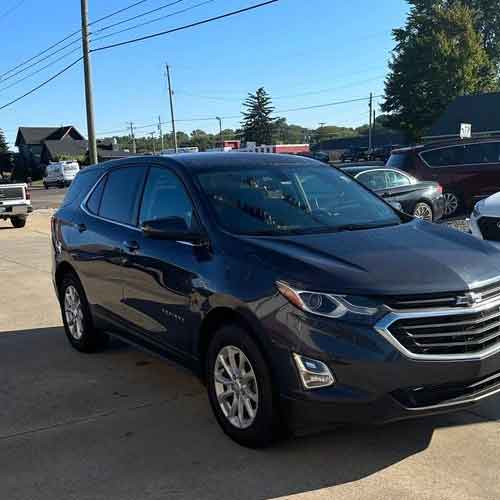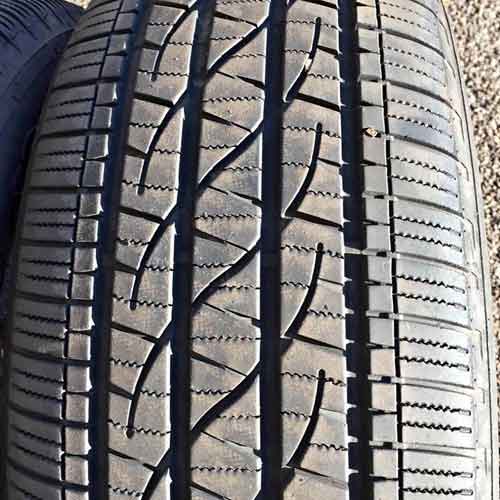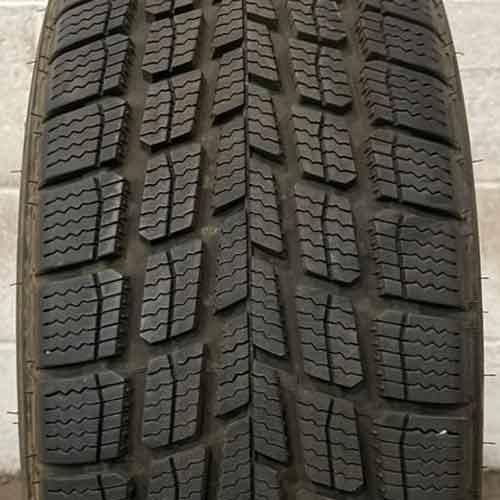The Firestone Destination LE3 is a Highway All-Season tire optimized for light trucks and SUVs, offering year-round traction and longevity. In contrast, the WeatherGrip is Firestone’s Grand Touring All-Season tire designed for various vehicles, emphasizing daily comfort and enhanced light snow traction. Let’s see which tire is a better fit for you.

In my experience as a tire engineer, the Firestone Destination LE3 excels in tread life, handling larger road bumps, fuel economy, and dry grip. In contrast, the Firestone WeatherGrip stands out in wet traction, snow performance, and cushioning minor road imperfections, but may be noisier.
Table of Contents
Sizes Available
The Firestone Destination LE3 comes in 15 to 22 inches wheels. And all of those sizes have following specifications.
- Speed ratings: T, H and V.
- Load ratings: SL and XL.
- Tread depth range: Almost all sizes have 10/32″.
- Weight range: 21 to 40 lbs.
- UTQG: 700 A B
- Winter ratings: No 3PMSF, only M+S.
- Tread mileage rating: 70k miles warranty.
The Firestone WeatherGrip comes in 15 to 19 inches sizes, and all of those have the following specs.
- Speed ratings: H and V.
- Load ratings: SL and XL.
- Tread depth: 10/32″ on all.
- Weight range: 17 to 30 lbs.
- UTQG rating: 640 AA.
- Winter ratings: Both 3pmsf and M+S.
- Treadwear warranty: 65k miles.
Tread Pattern
The Firestone Destination LE3 comes with a distinctive symmetric tread pattern.

Here the 3 ribs in the middle are distinguished with F and S shaped lugs (S on the central most, while F on adjacent ribs).
These basically are combination of lateral grooves and notches which join up the 4 circumferential channels with each other, allowing for decent resistance to hydroplaning.
Moreover, all these lugs here also carry lateral wave-like siping and chamfered edges.
The shoulder lugs although carry these similar features, they are more packed up, comparatively.
Moreover, they also have longitudinal slits , joined up with lateral (inner facing) notches. These basically add to the tire’s winter traction (for the most part).
Internally, the tire comes with a single ply polyester casing with 2 steel belts and a nylon cap ply (just 1).
On the other hand, its cousin, the WeatherGrip comes with a very spacious design, which is clearly more voided up in comparison.

And above that, you also get directional pattern here. Though similar 5 ribs are formed here as well.
The central most one is continuous running, well barely.
While others are properly voided up with lateral grooves, so the whole tread offers better groove connectivity with each other.
And these features of course help this tire with winter traction, for the most part.
Where longitudinal slits on all blocks add to snow grip, while numerous siping, and snow vices on shoulders and central most rib provide you with traction on ice.
Inside, the tire’s construction is lightweight, consisting of a single-layer polyester casing, dual steel belts, and a reinforcing nylon cap ply.
Tread Life
Treadwear is influenced by various factors, one of which is the tire’s UTQG treadwear rating.
While the UTQG isn’t the most reliable method for predicting tread life, it’s still valuable when comparing tires from the same manufacturer.
In this context, the Firestone Destination LE3, with a rating of 700, indicates slightly superior durability compared to the WeatherGrip’s rating of 640.
This means the LE3 offers a tread life 7 times longer than a reference tire, whereas the WeatherGrip provides a life 6.4 times longer (as denoted by its 640 rating).
That’s why there’s only a difference of 5k miles in the treadwear warranties of both tires.
But yes, overall, Destination provides you with longer tread life, mainly due to its stiffer rubber composition.
Wet Traction
Wet traction is largely determined by the tire’s sipes and grooves.
While grooves serve as direct channels to disperse water, the role of sipes is slightly more, you can say complicated.
Essentially, sipes are slits, which like other biters on the tread hold air in, at all times. And when the tire rolls, and those sipes compress upon contact with the ground, they naturally release air, and create a vacuum.
This generates a suction effect, enabling the tire to better displace water.
Now there are 2 things to learn from this.
- The more the number of sipes, the better it would be for wet traction.
- These sipes also need to be flexible enough, so they are not hindered in creating the needed suction.
Given this understanding, it’s logical, that despite lacking a significant number of full-depth interlocking sipes, the Destination LE3 falls short compared to its competitor here.
Its composition is comparatively more rigid, and it doesn’t have as many sipes, comparatively.
Additionally, the Firestone WeatherGrip, coming in with a directional tread pattern that’s more open, ensure efficient/greater water dispersal via grooves.
With directional pattern, where you get a V-shape or arrows like lugs, water is effectively directed out form the central area, and towards the shoulders and then of course out of the tire.
And yes, since more water being channeled out, sipes on WeatherGrip face less burden, further enhancing the tire’s wet traction capabilities.
On-Road Vibrations
Achieving ideal absorption of road irregularities is vital for a ride, that’s both smooth and comfortable. And here inner and outer construction of a tire matters a lot.
In this regard, the Firestone Destination LE3 is lacking behind its competition, but its subjective.
I mean while its tread compound isn’t able to handle larger road imperfections, “seamlessly”, it still showcases pretty appreciable stability.
Actually its not just about the absorption of the road bumps, its also about controlling them, so if it makes sense, LE3 offers a more controlled environment for larger vibrations.
On the flip side, with a very pliant rubber, the WeatherGrip is surely more adept at cushioning road imperfections. But it sometimes takes longer to completely settle down the larger vibrations.
Fuel Economy
Tire fuel efficiency is shaped by several determinants, including:
- The tire’s intrinsic weight, (which includes both inner and outer construction).
- Its rolling resistance tendency (which tells, how well lugs stick on the surface of the road).
- The specific rubber composition (where polymers are added to enhance fuel economy, without compromising grip).
Given these factors, it’s can be seen, why the Firestone Destination LE3 has a slight advantage.
Its lighter weight exerts less strain on its tread, preventing excessive bending and thus conserving fuel.
Furthermore, LE3’s relatively stiffer compound aids in fuel efficiency, while the softer composition of the WeatherGrip is more adhesive, requiring more energy to disengage from the road.
Winter Performance
If you’re in the market for an all-season tire, adept at navigating snowy terrains, the Firestone WeatherGrip is one of the top options you can check out.
It excels in vital performance metrics, from acceleration and braking to handling snowy conditions and delivering sharp steering responsiveness.
And its not really surprising. I mean, its validation of 3-peak mountain snowflake rating, plus its snow tires like directional pattern, and countless sipes, tell the story on their own.
While the directional pattern help with throwing snow backwards, generating forward momentum, the interlocking sipes provide ice traction. And yes, with biters, such as pronounced longitudinal slits, and snow vices, you also get superb snow traction.
On the other hand, the Firestone Destination falls a bit short, particularly evident in its lagging acceleration performance.
Moreover, its ice steering, which is although above average compared to its other competitors, still lacks the needed precision.
And of course this is due to its, for the most part, rigid rubber, which tends to stiffen in freezing conditions, compromising the tire’s flexibility and grip.
Noise Generation
Tire noise largely results from the interaction of air particles with the tire’s tread walls, (where they enter in, especially via the shoulder voids).
Actually the striking impact of these air particles with the tread walls, generates noise, which in some tires get further louder adding in growling sounds and in-groove resonance. And that’s very true for Firestone WeatherGrip.
This tire’s structure with more pronounced voids, allows increased air circulation within the tread, leading to majority of noise, which then, due to the tire’s softer composition further amplify that, leading to the addition of groove resonance.
And of course with so many sipes, and biters, there’s also a lot of growling sounds too.
On the flip side, the Destination LE3, with its more sealed shoulder design, limits the ingress of air.
Furthermore, any air that does penetrate interacts with its variable pitch tread.
This design means the lugs are crafted to minimize in-groove resonance, effectively dampening sound waves and preventing amplification.
This noise reduction is achieved as varied lug geometries modify the frequencies at which air particles collide, thus altering the resulting noise.
Dry Performance
To gauge dry performance, we focus on three critical aspects:
- Steering response.
- Dry grip.
- Lateral traction.
Let’s get into each, with more details.
Longitudinal Grip
The effectiveness of directional grip is reflected in stopping distances, which is recorded when the tire undergoes a full brake from a specified speed.
And here, elements such as tread composition, the surface area of rubber-to-road contact (especially at the center), weight, and rolling resistance together shape the overall grip quality, and tire’s stopping efficacy.
And so given these parameters, it’s logical that the Firestone Destination LE3 outshines in dry grip, as evidenced by its braking distance results.
Simply put, the tire offers greater rubber contact patch, compared to WeatherGrip, and therefore faster braking.
Dry Handling (Overall)
The shoulders and sidewalls are primary determinants of a tire’s lateral grip.
To put this in perspective, as the tire maneuvers a turn, the weight redistributes to the opposite side of the direction, leading the shoulders to engage most significantly with the road surface.
(This happens because of inertia).
Now given that the shoulders are less voided and have underlying reinforced support, the superior lateral grip of the Firestone Destination LE3, as showcased by it’s g-force measurements, is pretty straight-forward, and understandable.
However, it’s not merely about structure. I mean here, the tire’s performance can be hindered by its steering responsiveness a lot.
And that’s exactly what’s going on with its lacking competitor here.
Basically the WeatherGrip is more optimized for snowy conditions, where it mirrors the feedback of a snow tire (having slow outputs to steering inputs).
In other words, its noticeably more pliant winter tire like tread, results in a somewhat relaxed, or I should say sluggish communication with your wheel inputs.
And aggressive or abrupt steering inputs can easily unsettle the vehicle’s poise due to the tire’s flex-prone lugs, (sharing my experience on tests).
Basically with softer compound, its lugs deform more easily, and take time to regain shape. And that time adds up to the lap times (which is seen on tests).
Conclusion
Both tires showcase unique strengths, addressing different needs in the market.
For the Firestone Destination LE3, its advantages lie in a longer tread life due to a stiffer rubber composition, a controlled absorption of larger road irregularities, better fuel economy thanks to its lighter weight and stiffer compound, and notable dry grip as a result of its broader rubber contact patch.
On the other hand, the WeatherGrip shines with its superior wet traction, courtesy of its sipe structure and directional pattern, its adeptness at handling snowy conditions with its specialized design, and its ability to cushion minor road imperfections with a more pliant rubber.
In terms of noise generation, WeatherGrip tends to be louder due to its pronounced voids.
So ultimately, the choice between the two will depend on your specific preference.